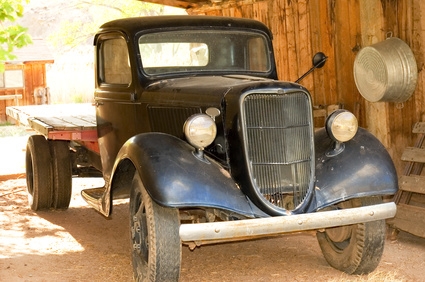
The first Ford truck was produced in 1905, and over a hundred years later, the American automotive company continues to manufacture and sell trucks around the world. In 1948, Ford introduced its F-series trucks, which took off in popularity and established the company's prominence as a manufacturer of trucks. If you want to keep your Ford truck running, it's good to be familiar with troubleshooting and repair methods. If your truck is broken, there are a number of ways of going about fixing it.
Diagnose potential engine problems with a vacuum gauge (about $15 retail cost as of 2011). Attach the gauge when the vehicle is warm. Connect it directly to the intake manifold. The gauge gives readings in terms of inches of mercury and is measured in units called "Hg." It should measure 15 to 20 in Hg while idling and up to 21 Hg when the engine hits 2,000 revolutions per minute.
Jump-start a dead battery. Using a running vehicle with a good battery, link the two vehicles with jumper cables. Connect one red (positive) clamp to the positive terminal of the dead battery, connect the other red clamp to the positive terminal of the good battery, and connect the black clamp to the negative terminal of the good battery. Wait a minute, turn the ignition of the dead vehicle, and let the battery charge up. Remove the cables carefully in reverse order.
Resolve a poor gas mileage problem with your Ford truck. Drive with the tailgate up, ease up on the gas when possible, and, for old Ford trucks, refrain from warming up the car on cold days for more than two minutes. In addition, you can install aftermarket performance parts such as a K&N air filter, aftermarket exhaust systems, and an upgraded electric fan.
Resolve engine start-up problems. To start a Ford truck (or any vehicle), the following conditions must be met: the starter is cranking, the battery must have a charge, the fuel and air mixture is correctly balanced, there is a strong enough spark to ignite the mixture, the engine valves open and close in appropriate time, and the cylinders have sufficient compression. If the starter won't crank, charge the battery or replace the starter. If it cranks but the vehicle won't start, the fuel electronics or spark plugs may need to be replaced.